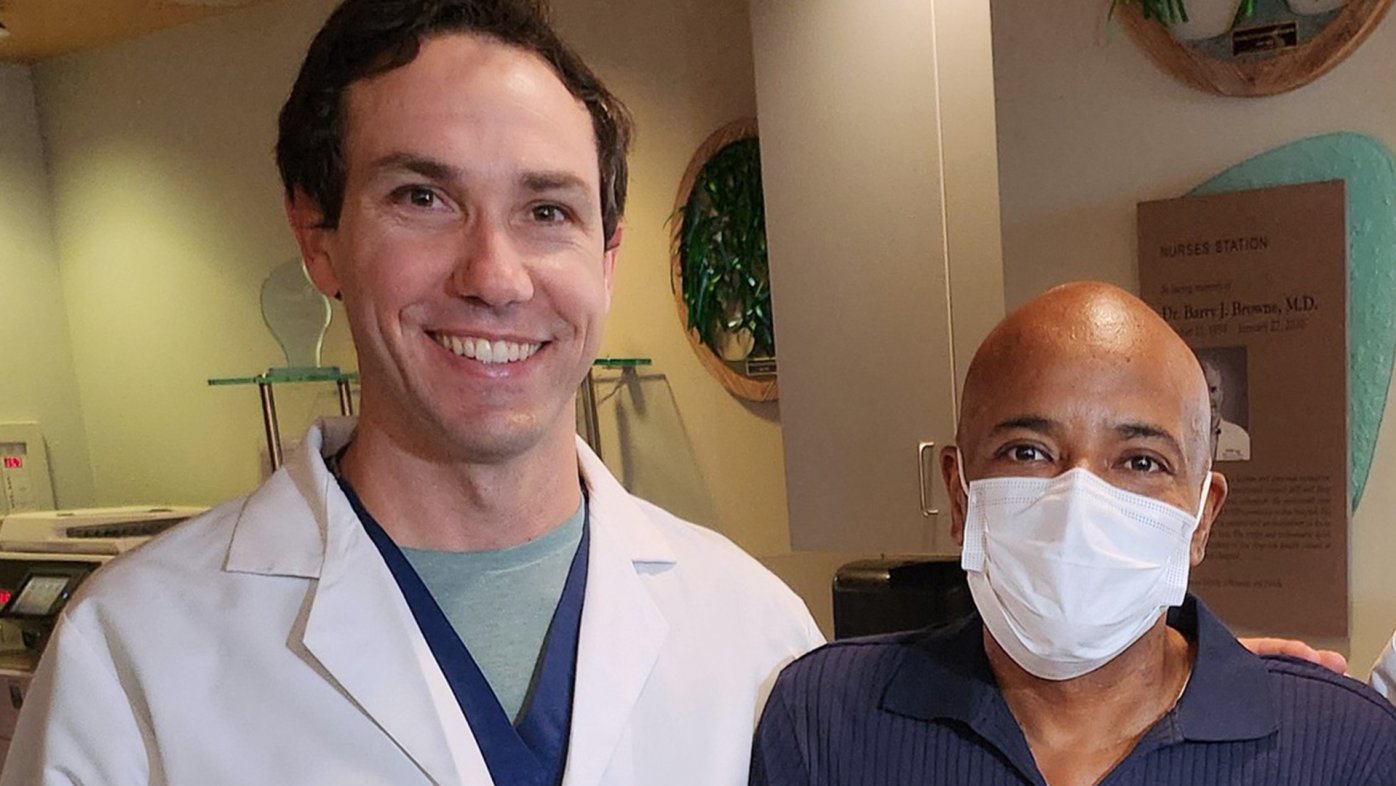
NYPD captain survives heart attack, multiorgan transplant
While on vacation in San Diego, an NYPD captain suffered a heart attack. After three months at Sharp Memorial, he received a heart transplant.
Nine years ago, Michael Pope Jr. was playing basketball when his heart started pounding. Normally, he would chalk it up to a good workout, but he also felt light-headed and fatigued, so he sat down in the shade. It was an effort to stand up and walk home.
“I was scared,” says Michael, who was 39 at the time. “I’m young, active and healthy. I shouldn’t feel this tired after shooting a couple of hoops.”
After a physical with his doctor, Michael was diagnosed with atrial fibrillation, or AFib, the most common heart-rhythm disorder and a common cause of stroke. Although AFib mainly occurs in people over age 60, younger individuals also can develop the heart condition. People of all ages with AFib are five times more likely to have a stroke because the irregular heart rhythm can cause blood clots to form. A clot can then travel to the brain, where it might block blood flow, causing a stroke.
To minimize stroke risk, Michael was treated with blood-thinning medication to control his symptoms.
An eye-opening experience
Over the next eight years, however, the medications became ineffective. Michael would have breakthrough episodes of AFib, during which his heart would start racing and he would feel light-headed. The symptoms began to affect his work as an operations specialist in the Navy. While attending a Navy function, Michael fainted and found himself in an ambulance heading to the Naval Medical Center.
“I didn’t know what was going on,” says Michael. “That was an eye-opener — to be somewhere else and not know how I got there.”
The cardiologist who treated Michael referred him to Dr. Charles Athill, a cardiac electrophysiologist at Sharp Memorial Hospital, for advanced treatment options. An electrophysiologist is a cardiologist who specializes in the diagnosis and treatment of abnormal heart rhythm. Dr. Athill determined that Michael was a good candidate for catheter ablation.
How catheter ablation works
Catheter ablation is a minimally invasive procedure, in which small wires are threaded into the heart via a blood vessel. A special machine delivers energy through the wires to tiny areas of the heart muscle to block abnormal electrical signals and restore a normal heart rhythm. The primary benefits of catheter ablation are the relief of debilitating symptoms due to AFib and the reduced risk of stroke.
The ablation was a success. Michael was walking within a few hours after the procedure, and he left the hospital the next day.
Since the catheter ablation, Michael has been symptom-free. He’s able to play basketball, run, work out and enjoy life with his wife and 7-year-old son, Michael Pope III, without the fear of having a stroke.
“Anytime I play sports now, it feels normal,” says Michael. “If my heart is racing, it’s because I made it race and not the AFib.”
Our weekly email brings you the latest health tips, recipes and stories.